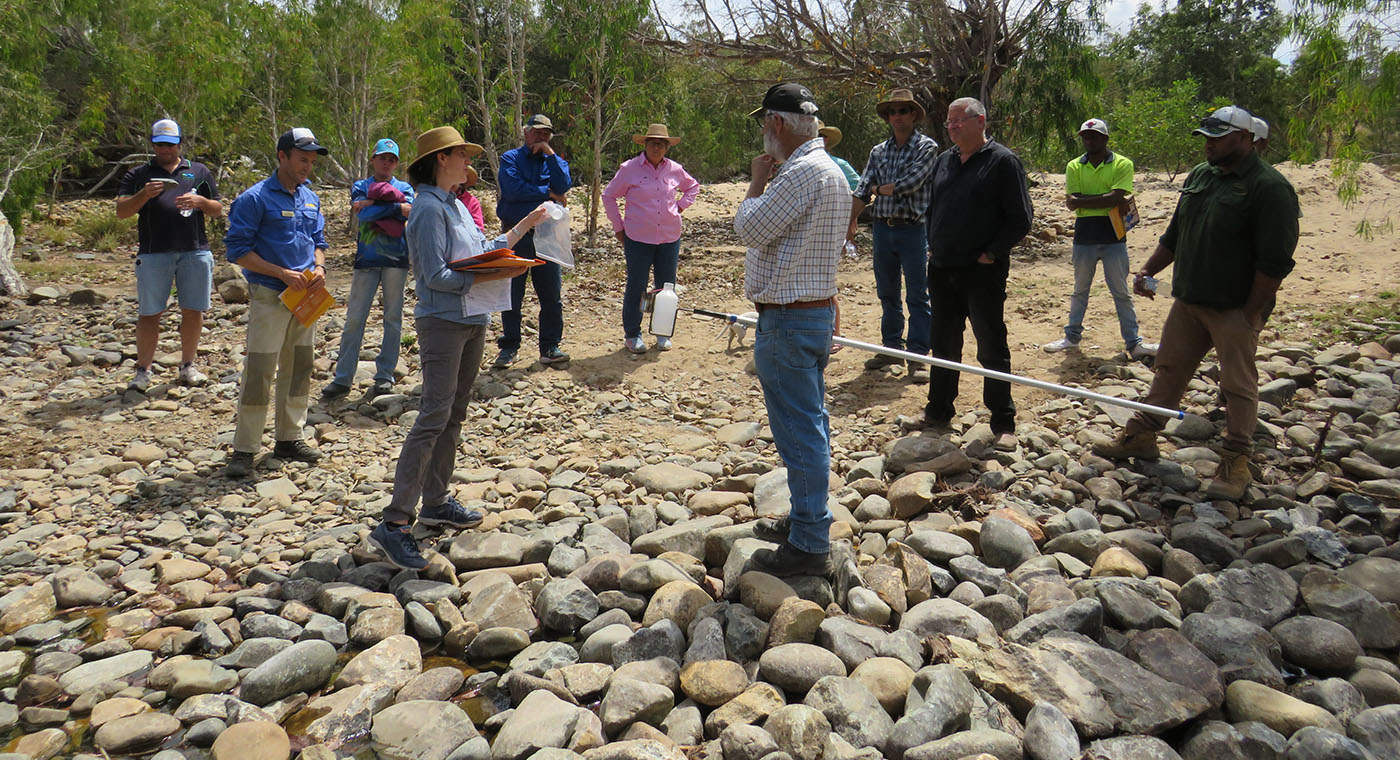Landholders don gumboots to collect vital water samples

Mick and Natalie Comerford, of Exmoor Station being shown how to collect water samples by TropWATER scientists Steve Lewis (out of picture) and Zoe Bainbridge.
This year’s wet season provided limited sampling opportunities for the landholders who make up the LDC Community Water Quality Monitoring Group.
All subcatchments had streamflows, however most of the flows were intermittent; quick to rise and fall, demonstrating the level of commitment by all landholders samplers who collected samples at all hours of the day and night.
More than 50 samples were collected from nine subcatchments across the BBB. This is a good effort and adds to the robustness of the dataset.
The samples are being analysed for phosphorous, nitrogen and sediment content.
When analysing the samples, The Centre for Tropical Water and Aquatic Ecosystem Research (TropWATER), James Cook University, uses geochemical tracing to determine the upstream tributary sources of sediment collected at the downstream Myuna gauge site.
Results so far show the Bowen River sub catchment is an area highly susceptible to soil loss, most likely due to soil type and fine sediment particle size.
This year’s findings, and the combined results from all previous years monitoring, will be published later this year.
Monitoring group performs a vital role
Nine properties in the Bowen, Broken and Bogie (BBB) catchment make up the LDC Community Water Quality Monitoring Group.
The group was established to better understand the water quality variations throughout the BBB catchment, with a focus on sediment and nutrient concentrations throughout a range of flow events.
Scientists Zoe Bainbridge and Steve Lewis from The Centre for Tropical Water and Aquatic Ecosystem Research (TropWATER), James Cook University, trained landholders to collect and store water samples.
The Community Water Quality Monitoring Group data is shared with the Queensland Government modelling team. The results are being used to enhance the Paddock to Reef Integrated Monitoring, Modelling and Reporting Program (Paddock to Reef Program) model and to improve confidence in load estimates and results for the BBB catchment.
For more information about the Paddock to Reef Program:
https://bit.ly/PaddocktoReefprogram.
With monitoring, LDC is learning more about how, when and where sediment (and nutrients attached to sediment) moves. This means graziers can respond better to help reduce sediment flowing out into the Great Barrier Reef lagoon.
TropWATER Research Scientist Zoe Bainbridge talks about the results of the 2020-2021 wet season to members of the community monitoring group.

